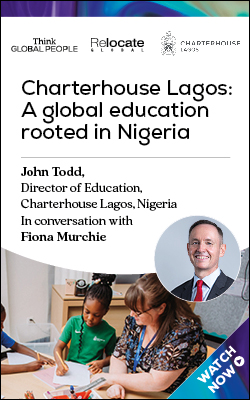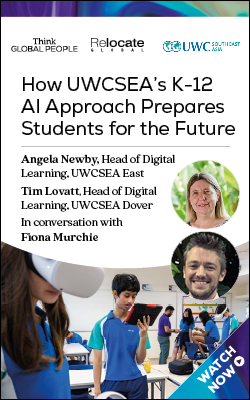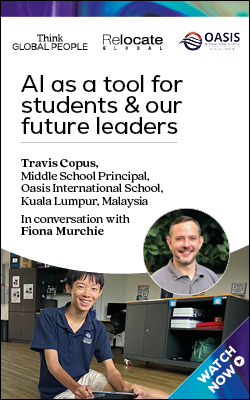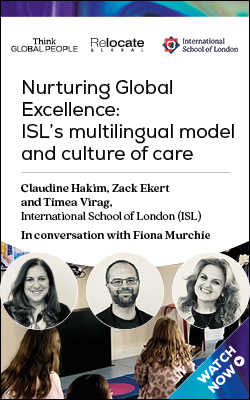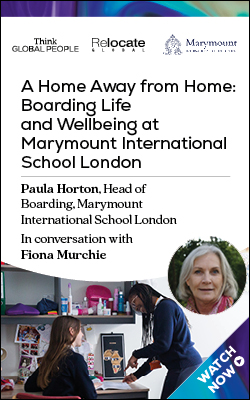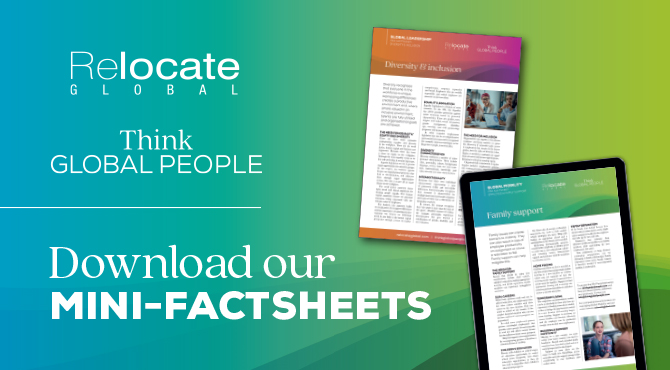Speaking beyond borders
Languages can give students confidence, identity and a greater understanding of each other in today’s shifting political and cultural landscape. Ledetta Asfa-Wossen reports.

Related reading
- ISKL: A Community Coming Together Through Language
- Fostering Global Minds: Battery Park Montessori's Trilingual and Holistic Approach
- Bridging cultures
- The benefits of a bilingual education for children and opportunities for life
Preserving a mother tongue at school
At the moment, the school offers instruction for students in 12 languages. These include Russian, Swedish, Greek, Dutch, Portuguese, French, German, Japanese, Italian and Turkish.“It's a wonderful thing because language and culture is such a really strong aspect for a lot of families who are interested in maintaining their child's first or native language and connecting their children to their own heritage and national identity,” says Waly. “This can be particularly important for a lot of parents who are globally mobile and want their child to consistently have a way to preserve that heritage. We’re definitely the perfect school in that respect.” The mother tongue programme at the school also allows students to celebrate national holidays and connect to their culture via a range of integrated activities as part of their overall learning experience. This feature is particularly relevant when students at the school make up around 80 different nationalities.Developing a mother tongue or learning a new language doesn’t just connect you to your identity. Waly believes it has a broader benefit in that through language, students can effectively learn to relate and collaborate in the workplace, their communities and beyond.But how easy is it for children to master a language and what’s the ideal age children should learn from? “Honestly, there is not a set time for kids to start learning a language,” says Waly. “Children can learn a language as soon as they are born. It’s easier for them to acquire a language when they're younger though.“We speak about acquisition and learning in education. Acquisition happens more naturally. The more exposed to the language they are at home, the easier it is for them to learn it. While learning happens later on when they're using their cognitive capacities to make sense of a new language.“Ideally, we want to make sure that we catch them at that stage where they're just naturally acquiring languages and provide the support and instruction that would allow them to be able to make sense of the new language and use it in an authentic way. At ISL Qatar, we start teaching children languages from early childhood, so three years old. The sooner they learn, the better.”However, learning a language is not just about timing and setting, says Waly. It also depends on learner aptitude. “Some students are simply more interested in languages than others. Any child can learn a language but students who really enjoy it generally do better because they spend the time learning and practicing it and keep themselves motivated. They are also more likely to apply what they learn outside of the classroom and seek support from others when they need it.”Why learning languages is important
Waly recalls a few of the benefits of language learning, particularly in a world that seems to be getting smaller with each advancement in technology.“Learning languages will always be important. Research has shown that learning more than one language is actually very good for children in general. With the world as it is, especially after covid, and how interconnected we have become and how often we get to connect with people from a wide range of backgrounds and experiences, there is so much value in language,” says Waly.“Then there’s the potential to work and study in places that you have never been to before. The opportunity of working and studying abroad is huge – not to mention the cultural competency that comes with it. You’re not only learning the language, but you’re also learning about people, culture, traditions and habits. All this helps you to become a more culturally competent person who is able to contribute to the world.“You’re likely to compete better too, but importantly I would say contribute. Whether that’s taking part or giving back to communities locally or globally. In terms of employment, being bilingual or multilingual has its advantages too. There is really high demand for people who are able to cross barriers between different cultures and countries with all that is happening in our world.”What’s the best language to learn?
There is no denying that some languages are more widely useful than others, but it very much depends on an individual’s goal.“English is, of course, a lingua franca. It's a language that unites people. English is a language that most of us use today when participating in international environments, even though many of us speak other languages.“I wouldn’t say there is one language that is more important than another. But across the US, for example, there is a desire among students to learn Chinese. Spanish is also very popular, mainly because of immigration and its extensive use. If you are planning to move to the Middle East, it makes sense to learn Arabic because it just makes life and integration much easier and helps to understand the broader culture of Arab nations. It’s also very widely spoken,” adds Waly.Spanish, Chinese and Arabic may be her top three, but ultimately she states you have to first understand how you will utilise that language.“Your chosen language needs to work in as many places and situations as possible. Does it align with what you really want to do in the future? Would it help support your community or help you secure a job? Is there a demand for it? How do you want to use that language to support people or a specific goal? If a student is interested in entering humanitarian work, for example, you might want to understand if there is more work in a certain region and if it would be useful to speak a language relevant to that region.”With language apps and sites like Duolingo, Babbel and Lingoda, learning a new language has never been more affordable and accessible at any age. Waly also sees AI as a positive tool that is accelerating and diversifying the way we learn languages, from language lesson planning for teachers, to boosting student autonomy and learning, providing pedagogical foundations remain intact. Minecraft, Chat GPT, Perplexity AI and Microsoft tools are just some examples of the technologies that are now being integrated to make language learning more interactive, immersive and relevant to the real world.Ultimately, the richness of learning at ISL Qatar is in the diversity it offers, states Waly, from its teachers (from over 50 different countries) to its students and learning techniques. This coupled with its unique focus on preserving the mother language and culture of any student who walks through its gates.Top 10 most popular languages to study
- English
- Spanish
- French
- German
- Japanese
- Italian
- Korean
- Portuguese
- Chinese
- Hindi
Read the latest issue of Think Global People magazine. Read your copy here.

Find out more about the Think Global People and Think Women community and events.

Subscribe to Relocate Extra, our monthly newsletter, to get all the latest international assignments and global mobility news.Relocate’s new Global Mobility Toolkit provides free information, practical advice and support for HR, global mobility managers and global teams operating overseas.
©2025 Re:locate magazine, published by Profile Locations, Spray Hill, Hastings Road, Lamberhurst, Kent TN3 8JB. All rights reserved. This publication (or any part thereof) may not be reproduced in any form without the prior written permission of Profile Locations. Profile Locations accepts no liability for the accuracy of the contents or any opinions expressed herein.












